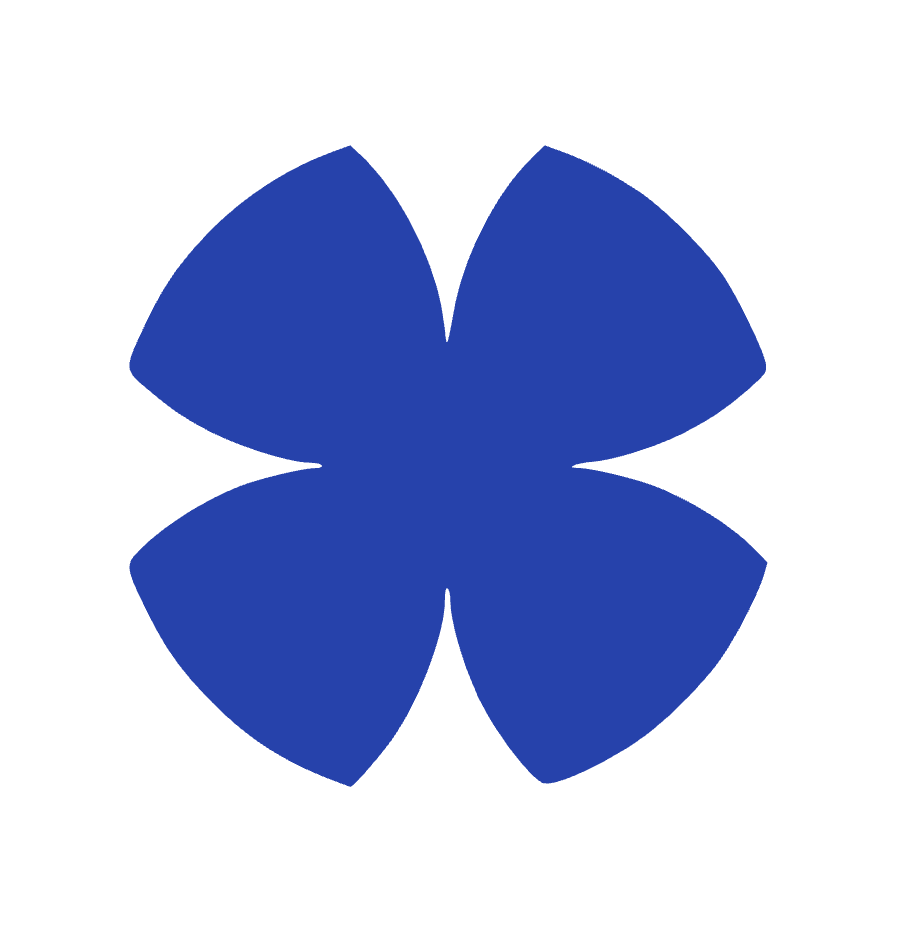How I Used Claude Projects as a Tutor to a Brand Strategy Course
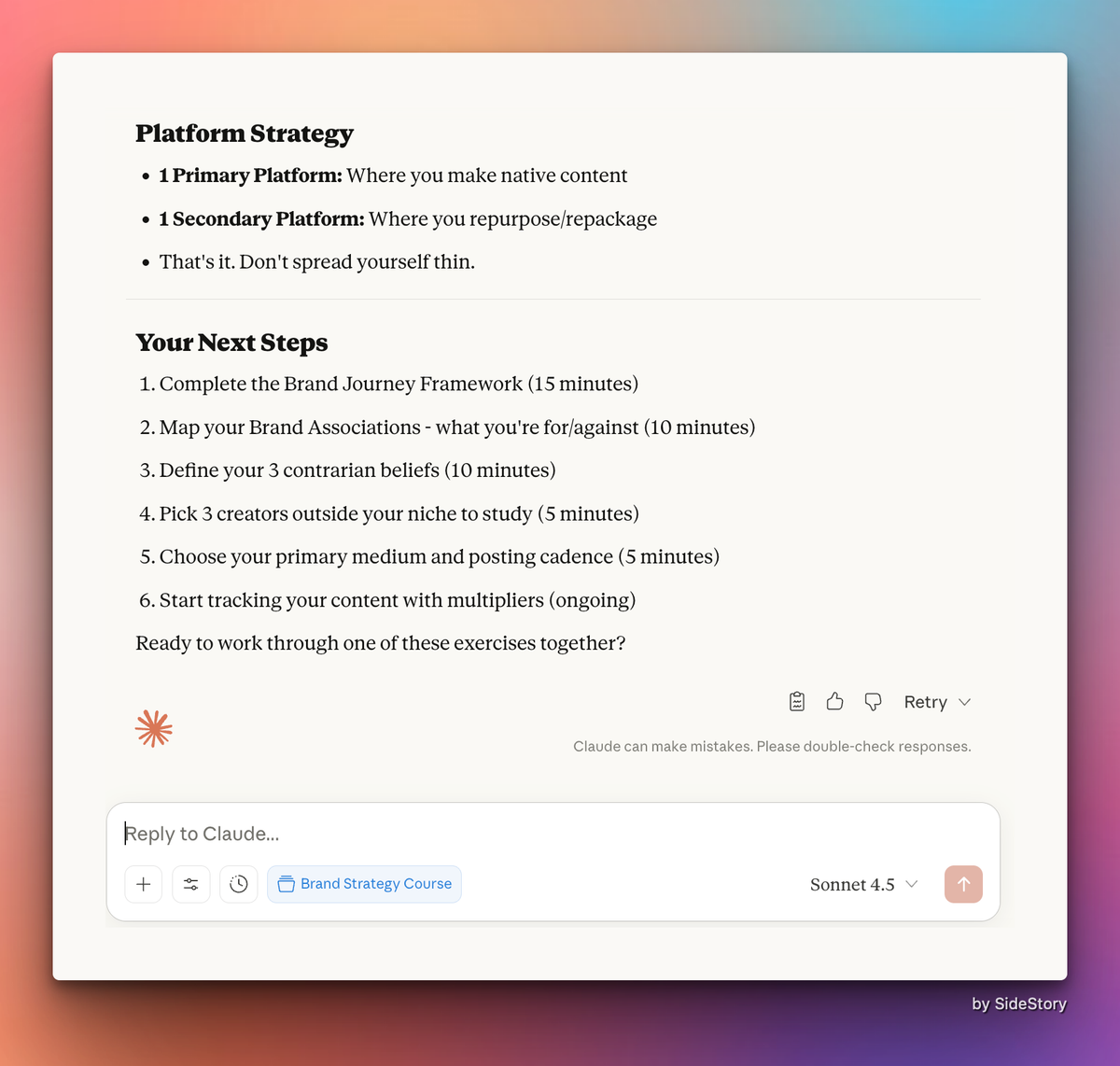
The Claude Workflow
Step 1: Create the Project Folder
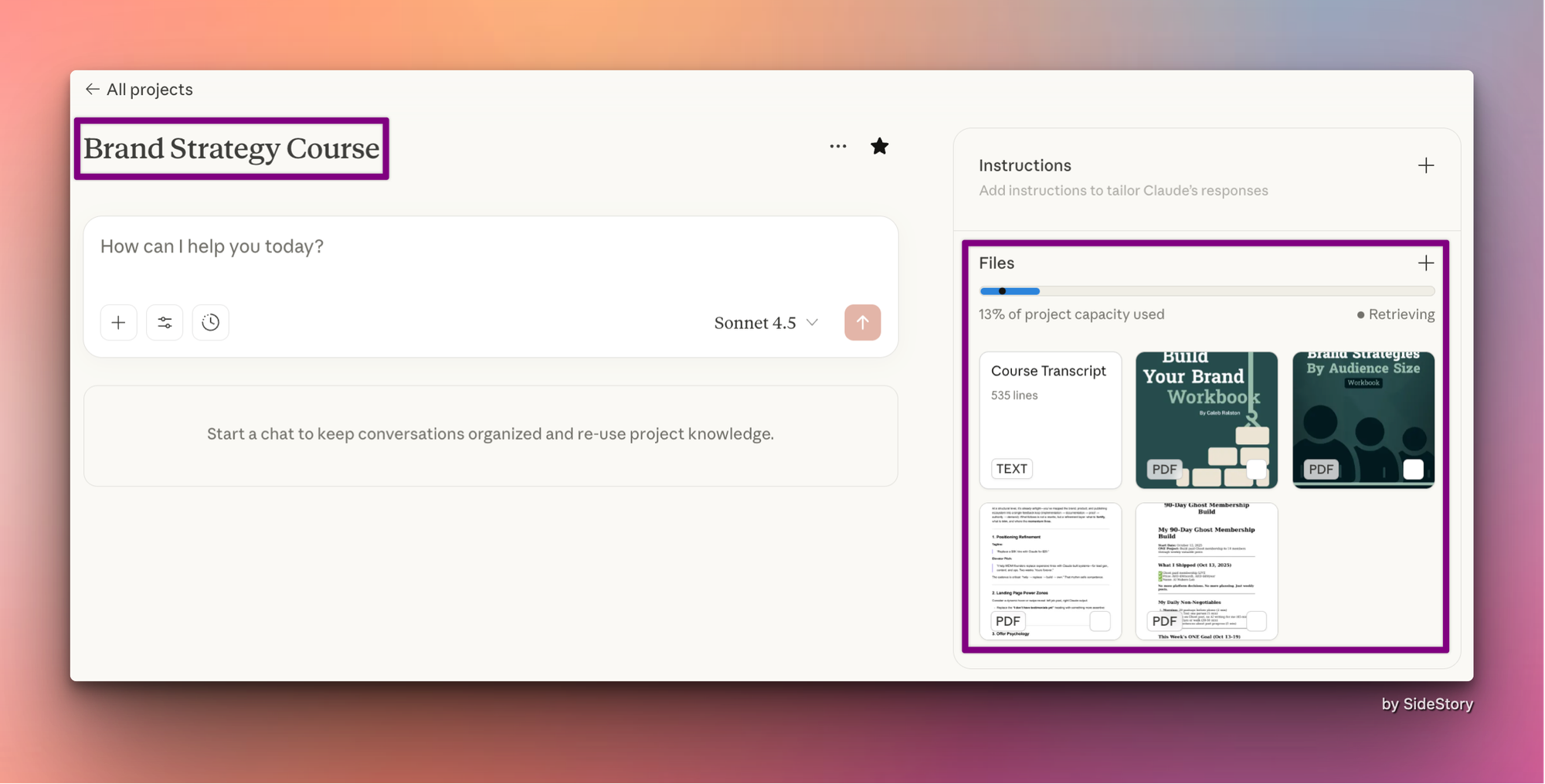
I created a Claude Project called "Brand Strategy Course" and uploaded three things:
- The course workbooks (PDF)
- Full course transcript (usingGlasp) Glasp is a web annotation tool for highlighting and sharing insights.
- My brand document (business MVP, target audience, goals)
Think of it as a filing cabinet. Everything related to this one learning goal lives here, building context the AI can reference in every conversation.
The brand document is critical. Without it, Claude guesses and potentially hallucinates. With it, every piece of feedback is filtered through my actual business reality.
Step 2: Set My Starting Point
Caleb's course covers strategies for 100K, 1M, and 10M follower brands. We reached 2K followers.
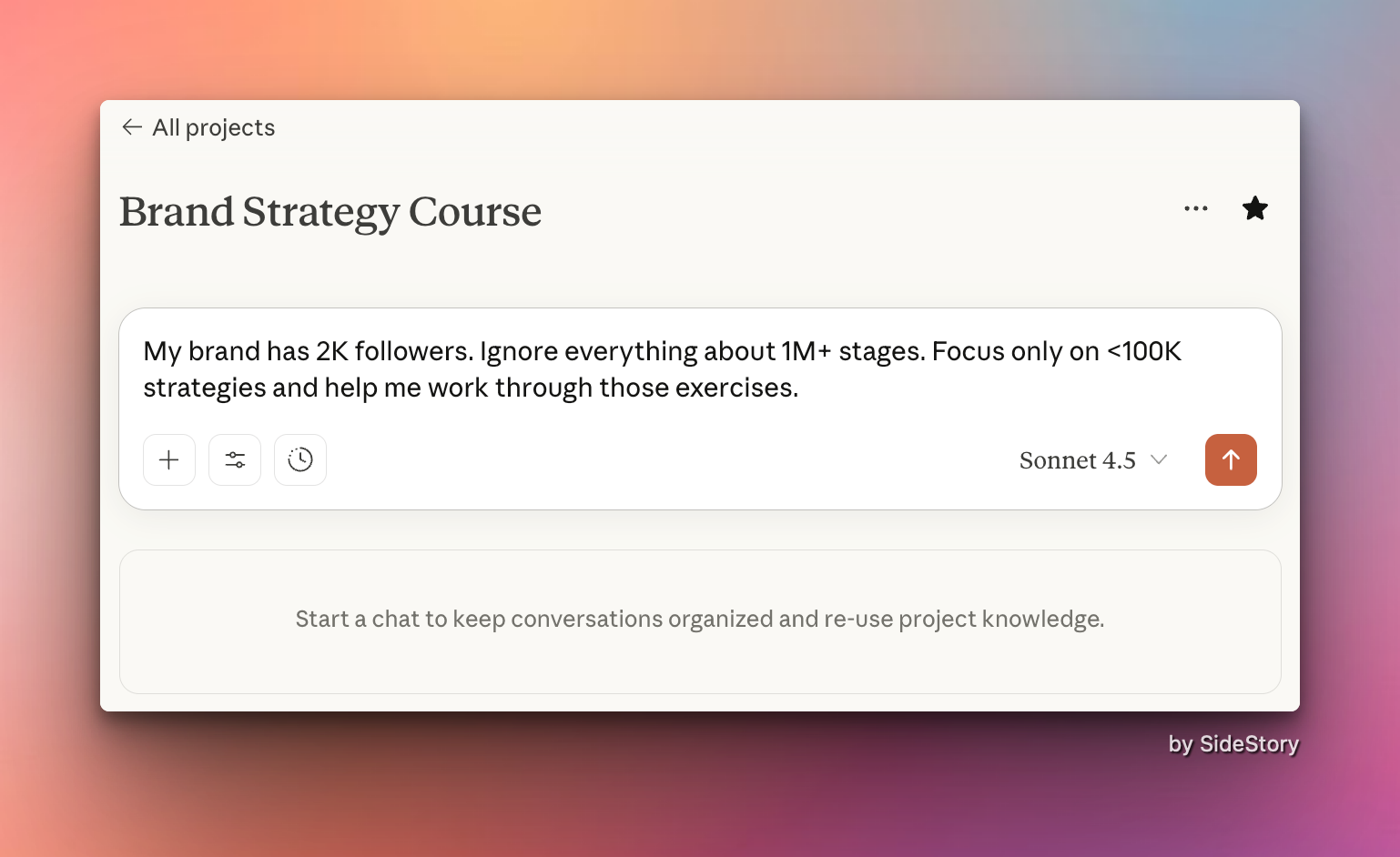
First prompt:
My brand has 2K followers. Ignore everything about 1M+ stages. Focus only on <100K strategies and help me work through those exercises.
This prevents generic advice (related to branding strategies). Claude knows my context, knows the material, knows my stage.
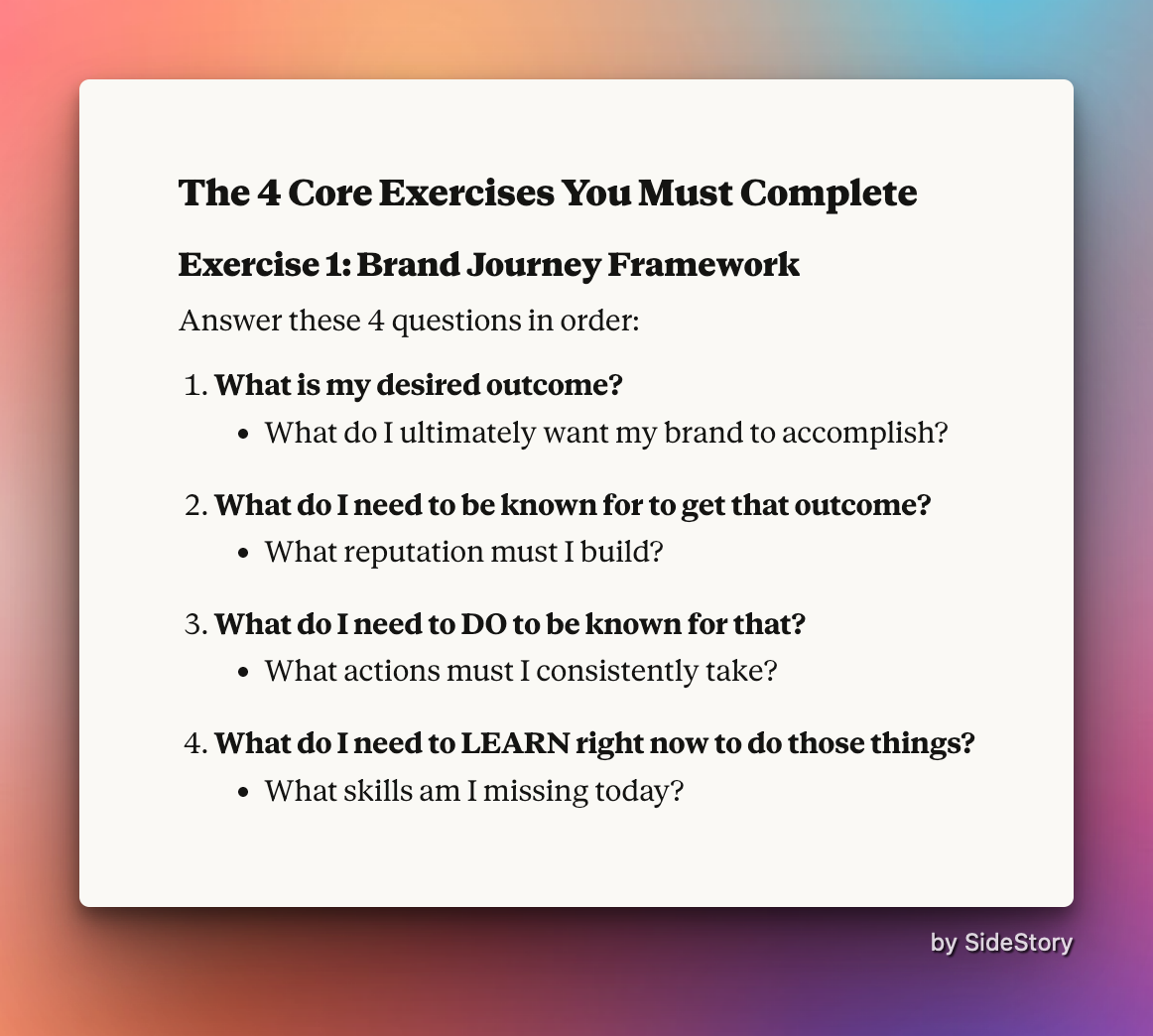
Step 3: Ask Questions
This is a mindset shift.
I don't ask: "What should my content pillars be?"
I do the exercise first, then ask: "I just completed Exercise 1. Here's my draft of three content pillars. Do they align with the course framework? Is the language strong enough for my target audience?"
Claude becomes a sounding board, instead of a tool that gives me ready answers. I'm building understanding after all.
Step 4: Build a Knowledge Base
After working through the exercises over 2 days, the project became more than a completed workbook for Caleb's course. It's serves as a reference library, to my branding journey.
I can add new documents anytime such as: sales reports, campaign ideas, blog drafts, and ask Claude to analyze them against the brand exercise we developed.
Context that's usually spread out across notes apps, PDFs, screenshots?
All in one place.
Results
- A completely different understanding of what my brand journey looks like in 2 days, which would've been potentially forgotten.
- Got actual clarity on a brand strategy instead of theoretical knowledge gathering, and endless learning loops.
What I'd do differently: Add a brand history doc upfront—past experiments, what worked, what didn't. More context = better feedback.
If you've got courses that remain unfinished, or workbooks you never got around to complete, try this approach.
